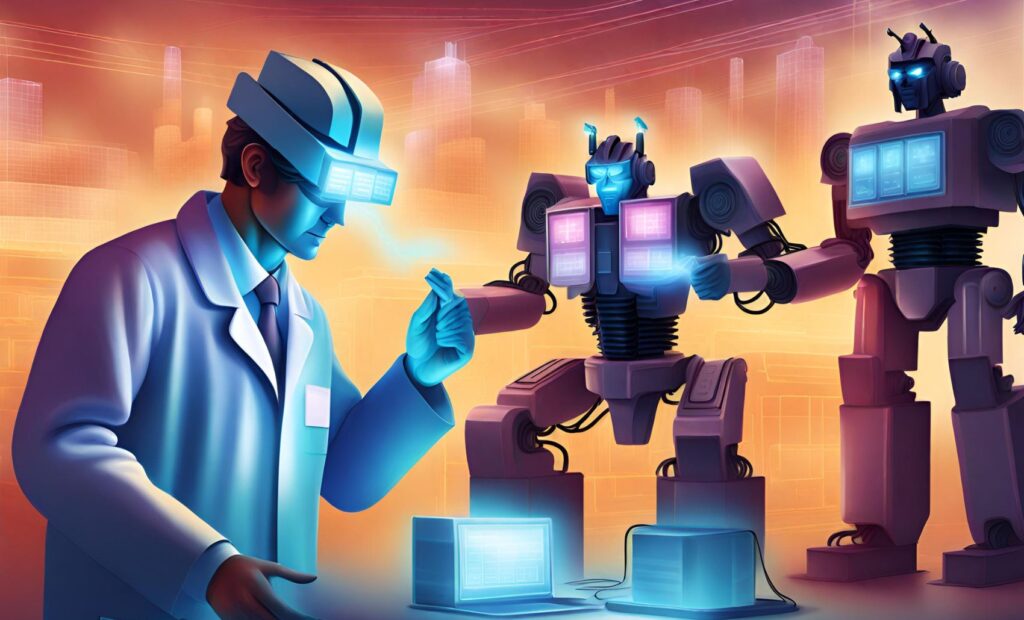Is the transformer model the next automation technology
The Transformer model is a type of deep learning model that has revolutionized many areas of artificial intelligence, particularly natural language processing (NLP), but also other fields such as computer vision and machine translation.
While the Transformer model is not an automation technology in itself, it can be used to automate tasks that involve processing and understanding sequential data, such as text, images, or time series.

For example, Transformer models can be used to develop automated systems that can perform tasks such as:
- Translating text from one language to another
- Generating text, such as summaries of factual topics or creative content
- Classifying text, such as identifying spam or sentiment analysis
- Detecting objects in images
- Predicting future events based on historical data
Transformer models are still under development, but they have the potential to revolutionize automation in many industries.
Here are some specific examples of how Transformer models are being used for automation today:
- In the healthcare industry, Transformer models are being used to develop automated systems that can read and interpret medical images, such as X-rays and MRI scans. This can help doctors to diagnose diseases more accurately and efficiently.
- In the financial industry, Transformer models are being used to develop automated systems that can detect fraud and other financial irregularities. This can help banks and other financial institutions to protect their customers and reduce losses.
- In the manufacturing industry, Transformer models are being used to develop automated systems that can predict machine failures and optimize production processes. This can help companies to improve efficiency and reduce costs.
Overall, the Transformer model is a powerful tool that has the potential to automate many tasks that are currently performed by humans. As Transformer models continue to develop and become more widely adopted, we can expect to see them play an increasingly important role in automation across a wide range of industries.

Overview of AI models transformer like ACT-1
ACT-1 is a large language model (LLM) developed by Adept AI. It is a type of transformer model, which is a neural network architecture that has been shown to be very effective for natural language processing (NLP) tasks. ACT-1 is unique in that it is trained to perform actions in the digital world, such as opening and using software applications, navigating websites, and interacting with APIs.
ACT-1 is still under development, but it has the potential to revolutionize the way we interact with computers. For example, it could be used to develop new types of user interfaces that allow us to control computers using natural language. It could also be used to automate tasks that are currently performed by humans, such as data entry and customer service.
Here are some other examples of AI models like ACT-1:
- AutoGPT: AutoGPT is a large language model developed by Google AI. It is similar to ACT-1 in that it is trained to perform actions in the digital world. However, AutoGPT is focused on code generation and automation, while ACT-1 is more focused on general-purpose tasks.
- Codex: Codex is a large language model developed by OpenAI. It is trained to generate code in a variety of programming languages. Codex can be used to automate tasks such as code generation, debugging, and refactoring.
- PaLM: PaLM is a large language model developed by Google AI. It is one of the largest and most powerful LLMs ever created. PaLM can be used for a wide range of NLP tasks, including translation, summarization, and question answering.
These are just a few examples of the many AI models that are being developed today. These models have the potential to revolutionize many industries and aspects of our lives.
Potential applications of AI models like ACT-1
AI models like ACT-1 have a wide range of potential applications. Here are a few examples:
- New user interfaces: ACT-1 could be used to develop new types of user interfaces that allow us to control computers using natural language. For example, we could use ACT-1 to tell our computer to open a specific program, navigate to a particular website, or perform a specific task.
- Task automation: ACT-1 could be used to automate tasks that are currently performed by humans, such as data entry, customer service, and software testing. This could free up human workers to focus on more creative and strategic tasks.
- Code generation: ACT-1 could be used to generate code in a variety of programming languages. This could help programmers to be more productive and to write better code.
- Creativity and innovation: ACT-1 could be used to help us to be more creative and innovative. For example, it could be used to generate new ideas, to solve complex problems, and to develop new products and services.
Overall, AI models like ACT-1 have the potential to revolutionize the way we interact with computers and the world around us.
Conclusion
Transformer models are a powerful new tool for automating tasks that involve processing and understanding sequential data, such as text, images, and time series. They have the potential to revolutionize many industries and aspects of our lives.
One of the most promising applications of transformer models is in the field of natural language processing (NLP). Transformer models can be used to develop new types of user interfaces that allow us to control computers using natural language. They can also be used to automate tasks such as data entry, customer service, and software testing.
Another promising application of transformer models is in the field of code generation. Transformer models can be used to generate code in a variety of programming languages. This could help programmers to be more productive and to write better code.
Overall, transformer models have the potential to revolutionize the way we interact with computers and the world around us. They are a powerful new tool that can be used to automate many tasks, improve productivity, and create new products and services.
References




